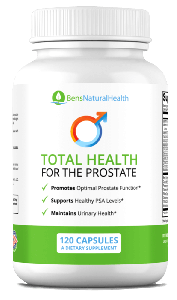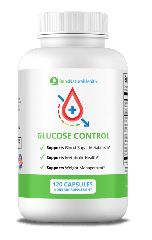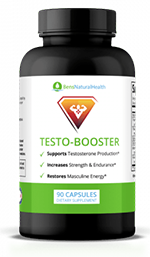- Q: What Is Epididymitis?
- Q: What Are the Common Causes of Epididymitis?
- Q: What Symptoms Should Patients Look Out For?
- Q: How Is Epididymitis Diagnosed?
- Q: What Are the Treatment Options for Epididymitis?
- Q: What’s the Outlook for Patients With Epididymitis?
- Key Patient FAQs on Epididymitis
- Conclusion
- Source
Epididymitis is a common cause of scrotal pain in men and is often confused with other urological conditions such as bacterial prostatitis. To help clarify the differences and guide patients through symptoms, diagnosis, and treatment options, we interviewed Dr. Alberto Parra, an expert in urological health.
In this comprehensive interview, Dr. Parra explains the full scope of epididymitis, from causes and diagnostic methods to treatment and potential complications, supported by medical literature and clinical practice.
All the content has been medically reviewed for accuracy and includes current evidence-based insights.
Q: What Is Epididymitis?
Dr. Parra answers: Epididymitis refers to inflammation of the epididymis, the coiled tube at the back of the testicle responsible for sperm storage and transport. It’s usually caused by bacterial infection, but other sources such as viruses, trauma, or idiopathic (unknown) causes may also be responsible. Mumps orchitis is one notable viral cause, especially in children.
Get Your FREE PSA Lowering Diet Plan!
- Naturally lower PSA levels
- Reduce nighttime trips to the bathroom
- Enjoy better bladder control and urine flow
Q: What Are the Common Causes of Epididymitis?
Dr. Parra answers: Causes vary, according to studies. Urinary reflux, especially in men with prostate enlargement, is a major factor. Urine may backflow into the vas deferens and epididymis, carrying bacteria with it. This is common in older men, particularly those with benign prostatic hyperplasia (BPH), urethra, or prostate cancer. Indwelling catheters and strenuous activities like weightlifting can also raise risk.
Acute Epididymitis:
- Often caused by E. coli, Klebsiella, or Proteus species.
- In men under 35, 50% of cases are sexually transmitted (e.g., gonorrhea, chlamydia).
- Less common causes include syphilis, Trichomonas, and tuberculosis.
- Viral causes include mumps, varicella, coxsackievirus A, and echovirus.
Sexually-transmitted epididymitis is a possibility, and it should be ruled out in any sexually active patient, especially if he’s around 35 years or less. Sexually-transmitted diseases cause approximately 50% of acute epididymitis cases, and the most common agents are Neisseria gonorrhea, Chlamydia tracomatis, Treponema pallidum, and Trichomonas.
Chronic Epididymitis:
- Results from inadequate treatment or tuberculosis.
- Characterized by recurrent, low-grade scrotal pain and inflammation.
Q: What Symptoms Should Patients Look Out For?
Dr. Parra answers: Studies and reviews show how symptoms can make a difference between acute and chronic epididymitis.
Acute symptoms include:
- Gradual scrotal pain (unilateral or bilateral)
- Swelling, redness, and warmth
- Urinary symptoms (dysuria, urgency, frequency)
- Fever and chills (25% in adults, up to 71% in children)
- Urethral discharge (suggesting STI origin)
In chronic cases:
- Scrotal pain lasting over 6 weeks
- Skin induration
With mumps orchitis:
- Fever, myalgia, malaise
- Parotid gland swelling
- Up to 40% present with co-infections
Q: How Is Epididymitis Diagnosed?
Dr. Parra answers: Diagnosis begins with a full history and physical exam, particularly to rule out testicular torsion. Key clinical signs include:
- Skin induration and tenderness (starting in the epididymal tail)
- Elevated testicle position
- Scrotal erythema and possible cellulitis
- Reactive hydrocele (in advanced cases)
- Painful prostatic massage
- Urogenital anomalies
Laboratory Tests:
- Urinalysis: detects pyuria or bacteriuria
- Urine culture: crucial in older adults and resistant cases
- CBC: confirms infection and WBC type
- Urethral discharge Gram stain: identifies STIs
- Urethral culture and NAAT: rules out gonorrhea and chlamydia
- HIV and syphilis testing
- CRP and ESR: determine inflammation level
Imaging & Advanced Diagnostics:
- Scrotal ultrasound
- Retrograde urethrography
- Voiding cystourethrogram
- Radionuclide scanning, chest X-rays
Q: What Are the Treatment Options for Epididymitis?
Dr. Parra answers: According to studies, treatment involves three approaches: medication, supportive care, and in rare cases, surgery.
Pharmacologic Treatment:
- Antibiotics: Course length depends on acute or chronic case; sometimes up to 6 weeks.
- Partner treatment: Required if STI-related.
- Children: Only treated with antibiotics if urine tests confirm infection.
Supportive Therapy:
- Bed rest and reduced activity
- Scrotal elevation and support
- Ice packs to reduce inflammation
- NSAIDs and painkillers
- Sitz baths for local relief
Surgical Intervention:
- Epididymotomy: incision or drainage
- Epididymectomy: complete removal of epididymis
- Orchiectomy: removal of epididymis and testicle in severe cases
- Skeletonization: rare; for chronic refractory pain
Q: What’s the Outlook for Patients With Epididymitis?
Dr. Parra answers: Most patients improve within 2–3 days of antibiotics, though skin changes may persist. If STDs are involved, there’s a 2–5x higher HIV risk. Complications may include:
- Scrotal abscess or pyocele
- Testicular infarction (due to compromised blood flow)
- Transient sperm abnormalities and rare sterility
- Testicular atrophy
- Fistula formation (especially in tuberculosis cases)
- Recurrent or chronic epididymitis
Mumps-Associated Complications:
- Hypogonadotropic hypogonadism (testosterone failure)
- Testicular atrophy in 50% of cases
- Sterility in 13% of mumps orchitis patients
Key Patient FAQs on Epididymitis
Q: Can epididymitis develop after a vasectomy, and if so, how common is it?
Dr. Parra answers: Yes, epididymitis is listed as one of the possible complications after a vasectomy. According to a safety study analyzing data from thousands of patients between 1964 and 1998, vasectomy is a safe procedure with a failure rate of less than 1%. This means fewer than one in every 100 patients needs a second surgery to complete the process. The study also showed that the likelihood of side effects, including epididymitis, ranges from about 1% to 6%, depending on factors like the patient’s predisposition, post-surgical care, and the technique used by your doctor.
In any case, some inflammation of the epididymis is expected after a vasectomy because that is where the procedure is performed. The tissue becomes inflamed following surgical manipulation, but in most cases, symptoms significantly improve with time and proper medication.
So, if you experience symptoms such as scrotal pain, painful urination, and redness or visible swelling, it is important to report these occurrences to your doctor to know whether you need to increase your anti-inflammatory medications or include an antibiotic for epididymitis.
Q: What role does immune system suppression (e.g., from steroids or HIV) play in chronic epididymitis?
Dr. Parra answers: Immunity problems can increase the risk of epididymitis and other infectious diseases due to the body’s inability to clear an infection that may reach the urinary tract. This results in ongoing inflammation and can trigger epididymitis symptoms, which may become worse in patients with immune suppression.
In chronic epididymitis, the issue persists because the body is unable to fully resolve the inflammation. Various factors, often interacting, such as persistent infections, immune issues, or hypersensitivity, can contribute to this. Patients frequently exposed to sexually transmitted diseases are more likely to have infections that linger in the urinary tract, causing continuous inflammation.
This is especially true when an immune system issue is present, whether caused by medications or underlying health conditions. Studies show that these individuals are more susceptible to multiple infections and may experience a recurrence of epididymitis or an exacerbation of existing diseases. Even after the infection is cleared, individuals with weakened immune systems may experience prolonged inflammation and hypersensitivity, resulting in chronic symptoms despite the complete eradication of the causative agent.
Q: Are there long-term risks of epididymitis impacting testosterone production?
Dr. Parra answers: Yes. Epididymitis can cause long-term problems in the testicular tissue and affect testosterone levels. This is especially true when epididymitis is accompanied by orchitis, an inflammation of the testicles. Since both structures are close together, infections and inflammation affecting one can also impact the other. Studies show that patients with epididymo-orchitis not only experience lower testosterone levels but also have a reduction in testicular volume, which can be interpreted as an atrophy that may worsen in chronic cases depending on how long the infection remains untreated.
There is also a medical report of three cases where epididymitis led to testicular infarction, a rare condition where the testicles stop receiving blood and oxygen, resulting in tissue death. In such cases, testosterone production is also affected.
That’s why some patients with epididymitis may have lower sperm quality compared to their peers, and sometimes experience hypogonadism and reduced fertility. Therefore, preventing long-term complications through early and appropriate treatment is crucial. Remember, outcomes can vary, and not all patients with epididymitis will experience these issues.
Q: Can epididymitis symptoms flare up during sexual activity or ejaculation?
Dr. Parra answers: Yes. The epididymis is part of the reproductive system and plays an important role in releasing sperm during ejaculation. Therefore, one of the symptoms of this condition is painful ejaculation and flare-ups during sexual activity.
During ejaculation, the muscles around the epididymis and other tubular structures contract as part of the ejaculatory process. These structures are inflamed and tender, causing pain during the passage of sperm. In acute cases, the scrotum and testicles may also become swollen and tender, leading to discomfort upon contact. Sometimes, blood can be seen in the semen. Other symptoms include pain during urination and fever, especially in more severe cases.
When it comes to epididymitis and sexual activity, it is important to consider the risk of sexually transmitted diseases. If your epididymitis is caused by a sexually transmitted infection, studies and reviews show it is recommended to abstain from sexual activity until you and your partner are symptom-free. This allows the infection to clear before resuming sexual activity.
Q: How can you tell the difference between testicular torsion and epididymitis at home?
Dr. Parra answers: Studies mention that the main difference between testicular torsion and epididymitis is the onset of symptoms. Testicular torsion is a medical emergency, characterized by sudden and severe pain that begins immediately. In contrast, scrotal pain caused by epididymitis can also be severe, but it develops gradually over a few days and may become difficult to tolerate.
Other symptoms of testicular torsion include nausea and vomiting, which are usually related to the intensity of the scrotal pain. Patients may also notice a difference in the height of their testicles; the affected testicle often becomes elevated and may appear twisted or different from its normal state. When these symptoms are combined with sudden, severe scrotal pain, it suggests testicular torsion rather than epididymitis.
Symptoms of epididymitis that can help differentiate it from testicular torsion include fever, painful urination, and sometimes urethral discharge. The presence of these symptoms, especially fever, indicates an inflammatory process in the urinary tract. Without scrotal pain, prostatitis might be considered, but since scrotal pain is a key symptom, epididymitis is more likely.
Q: Is there any dietary or probiotic support that helps during or after treatment?
Dr. Parra answers: Yes, if you start antibiotic treatment to eliminate a sexually transmitted infection or epididymitis, it is always a good idea to support your gut health with a probiotic. These are live strains of beneficial bacteria that replace those being attacked and killed by the antibiotic in an effort to clear the infection. There are different types of probiotics, but a combination of Lactobacilli and Bifidobacterium works well to reduce the risk of antibiotic-associated diarrhea and other complications from extended antibiotic use.
If you are considering taking probiotics as part of your treatment, you should consider the specific strains and the appropriate timing for taking the supplements. Studies show that Lactobacillus rhamnosus and Bifidobacterium lactis are among the best options to use if you’re taking antibiotics. You can also use some strains of Lactobacillus acidophilus, especially one known as Rosell-11.
Instead of using the probiotic only for a few days during antibiotic treatment, it is best to start taking the supplement immediately after you learn you should take them. Taking the probiotic one or two days before, during, and several weeks after antibiotic treatment increases its effectiveness on the gut flora and lowers the chances of diarrhea and dysbiosis. Also, take probiotics and antibiotics at least two hours apart to prevent direct contact between the antibiotics and the bacterial strains, which could destroy them before they reach the gastrointestinal tract.
Conclusion
Epididymitis is a complex but manageable condition. Prompt diagnosis, proper antibiotic use, and supportive care often lead to complete recovery. When left untreated or improperly managed, complications can develop, including chronic pain, reduced fertility, and in rare cases, surgical intervention. Early recognition and individualized care are essential for optimal outcomes.
Our Medical Review Process
At Ben’s Natural Health, we are committed to delivering content that is accurate, transparent, and backed by science. All of our health-related articles are created by qualified medical professionals and go through a thorough review every 12 to 24 months to ensure the information remains current and supported by the latest research. We rely exclusively on peer-reviewed studies from respected medical journals and include full citations and direct links to maintain trust and credibility. For more details, visit our page on medical review procedures and research standards.
Our Editorial Guidelines
With a legacy of over 25 years, Ben’s Natural Health is recognized as a dependable source of evidence-based natural health information. Our editorial standards are built on precision and integrity. Each article is authored by certified professionals, including doctors, registered dietitians, nutritionists, fitness specialists, and medical experts, and is independently reviewed to confirm its accuracy. Author bios and professional qualifications are prominently displayed to ensure transparency. To learn more, explore our editorial guidelines.
Medical Disclaimer
All material on this site is provided for informational and educational purposes only and should not be used as a substitute for professional medical advice, diagnosis, or treatment. While our content is written and reviewed by licensed healthcare professionals, it may not address your individual health situation. Always consult a licensed medical provider for advice regarding any health issues. Do not disregard or delay seeking medical care based on content from this website. Use of the information provided is at your own discretion and risk.
Explore More








